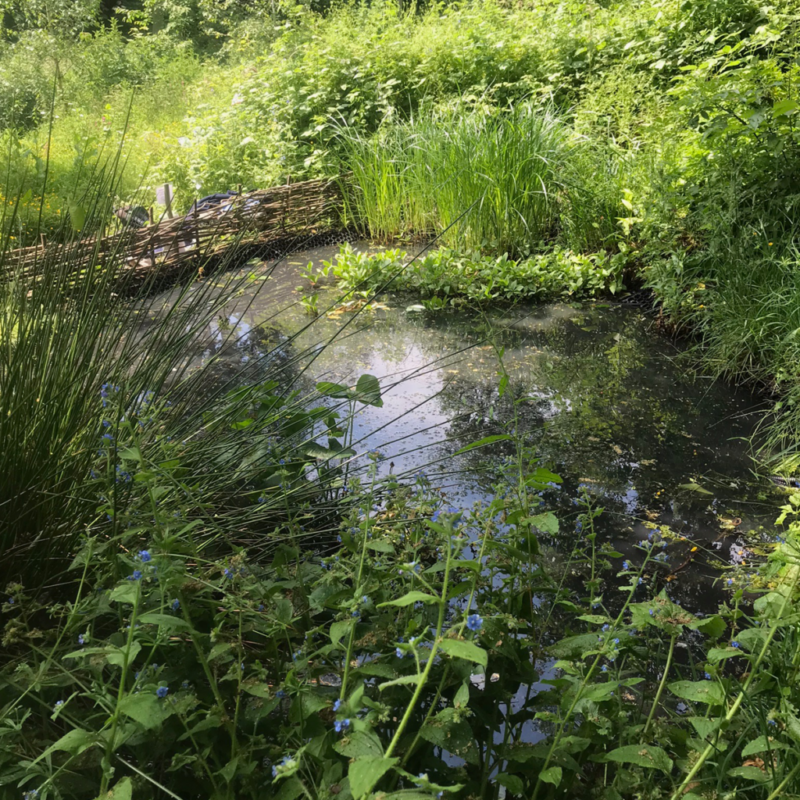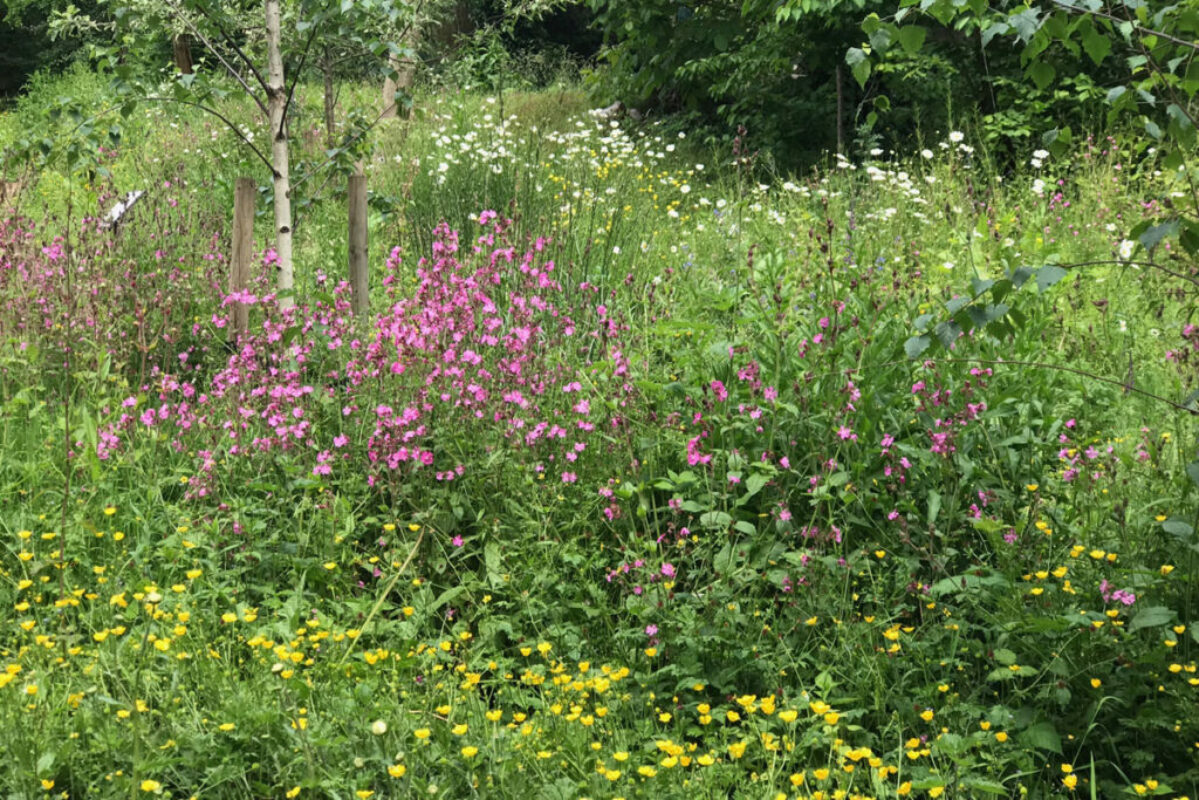This plot was previously of limited natural value and with the approval of Haringey Council we have been able to transform the area and provide conditions for many different types of flora. It’s now the most invertebrate and flora rich area on the Parkland Walk. Volunteers attend the site every Wednesday morning. The area is open to the public on most days including bank holidays subject to the availability of volunteer gatekeepers. For more information visit the website page for The Wildlife Trail.
Holmesdale Road, Highgate Tunnel ‘bowl’ (map)
This bowl shaped area by the entrance to Highgate tunnels is a perfect haven for insects, butterflies and birds. It benefits from collecting the sun’s warmth and water that drains from the surrounding heights. Maintaining a balance between the trees, shrubs and meadow is key to protecting the habitat. The tunnels are also one of London’s major bat-roosting sites. Bats roosting here feed along the length of the Parkland Walk which they use as a corridor to insect-rich lakes in Finsbury Park and beyond. A small amount of bramble is useful as defensive cover and as a supply of food, but we aim to ensure that bramble doesn’t overcome the whole site and that the same goes for ash and sycamore – trees which can be very aggressive in extending their reach. The damp ground has attracted Grey wagtails who feed in the mud. They’re on the RSPB amber list.
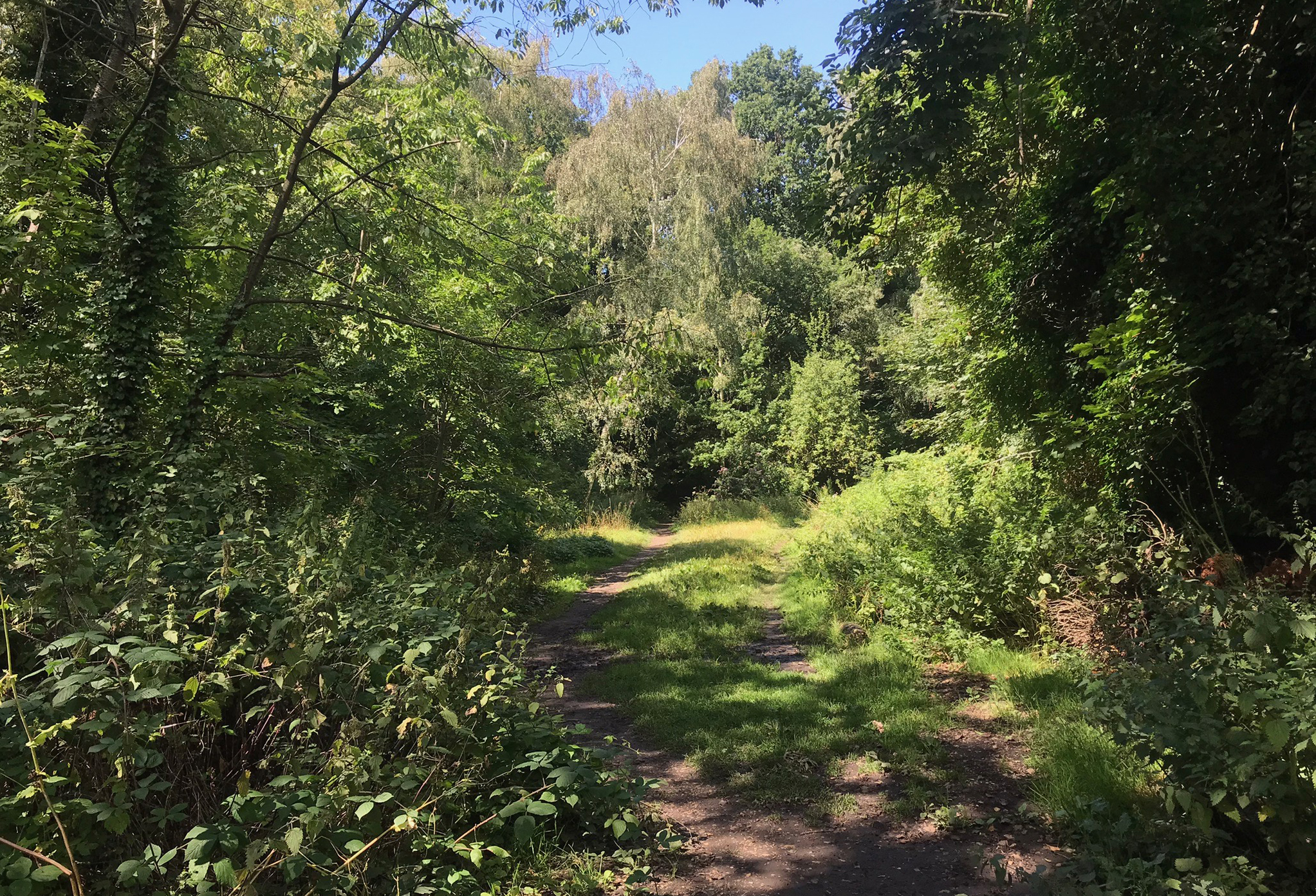
The Acid Grassland (map)
The acid grassland, situated in Islington between the Mountview Road bridge and the Blythwood Road entrance gate is the only one of its kind along the Walk, or indeed in the whole of Islington. Nationally, south facing habitats of this kind are in jeopardy, with the loss of associated plants and other wildlife. In this particular example, due to the gradual encroachment of surrounding trees, the overall area has shrunk. Lowland acid grassland develops on low-nutrient soils on free draining sandy soils. More…
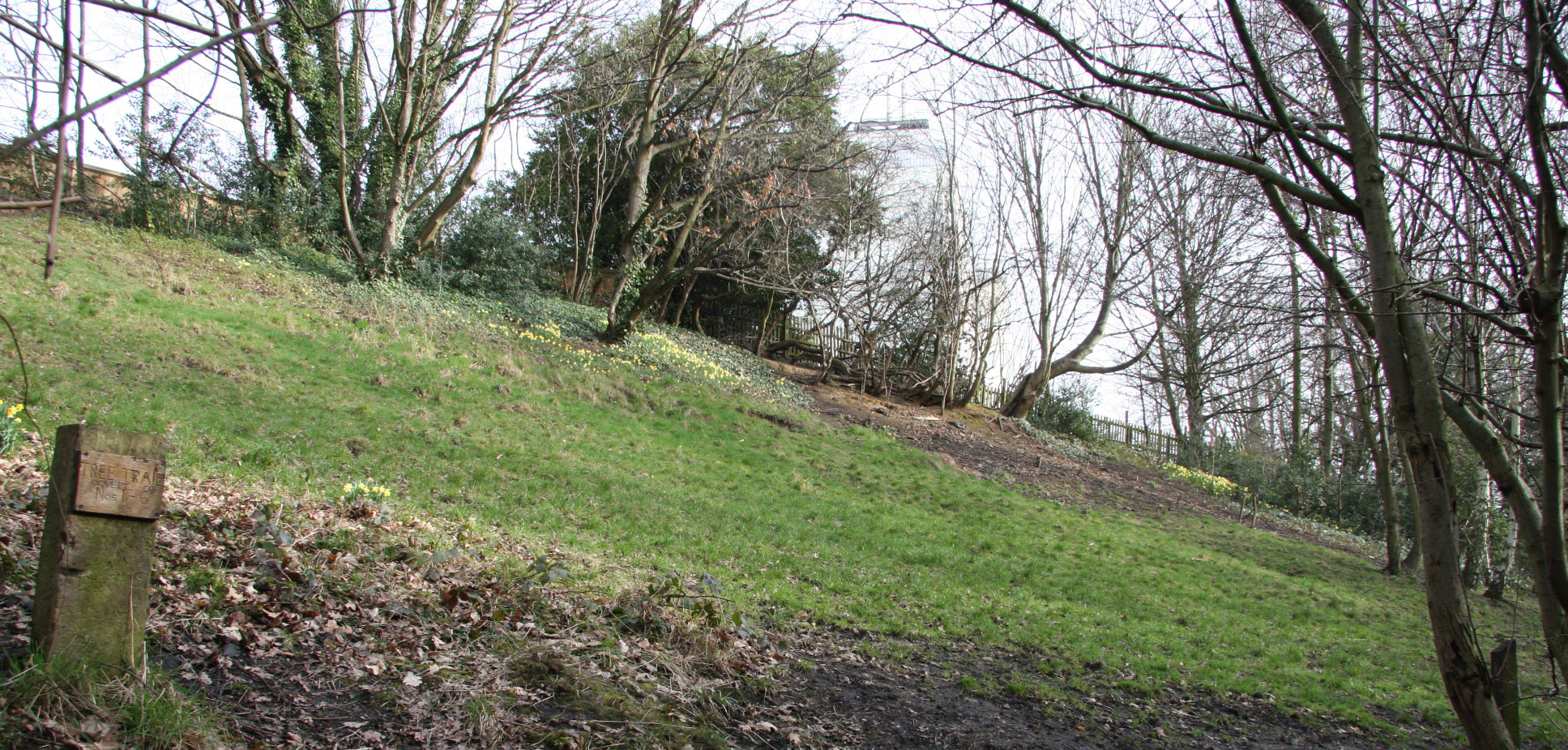
Florence Road/Stroud Green meadows (map)
This area, to the west of Upper Tollington Park, is the only location along the length of The Parkland Walk that retains some resemblance to the former condition of the embankments during its time as a railway. The UK has lost 97 percent of its meadows in the last 100 years. This decline is one of the top concerns for naturalists.
The embankments face both north and south creating very different conditions for flowers and invertebrates. On one sunny summer’s day in 2022, we noted the north facing embankment was teeming with butterflies when the south facing had barely any.
One of our tasks is to ensure that this area of meadow is not lost to the rampant advance of bramble. Annual pruning work is carried out by volunteers over the period when the bramble fruiting season has passed and before birds start nesting in the spring.
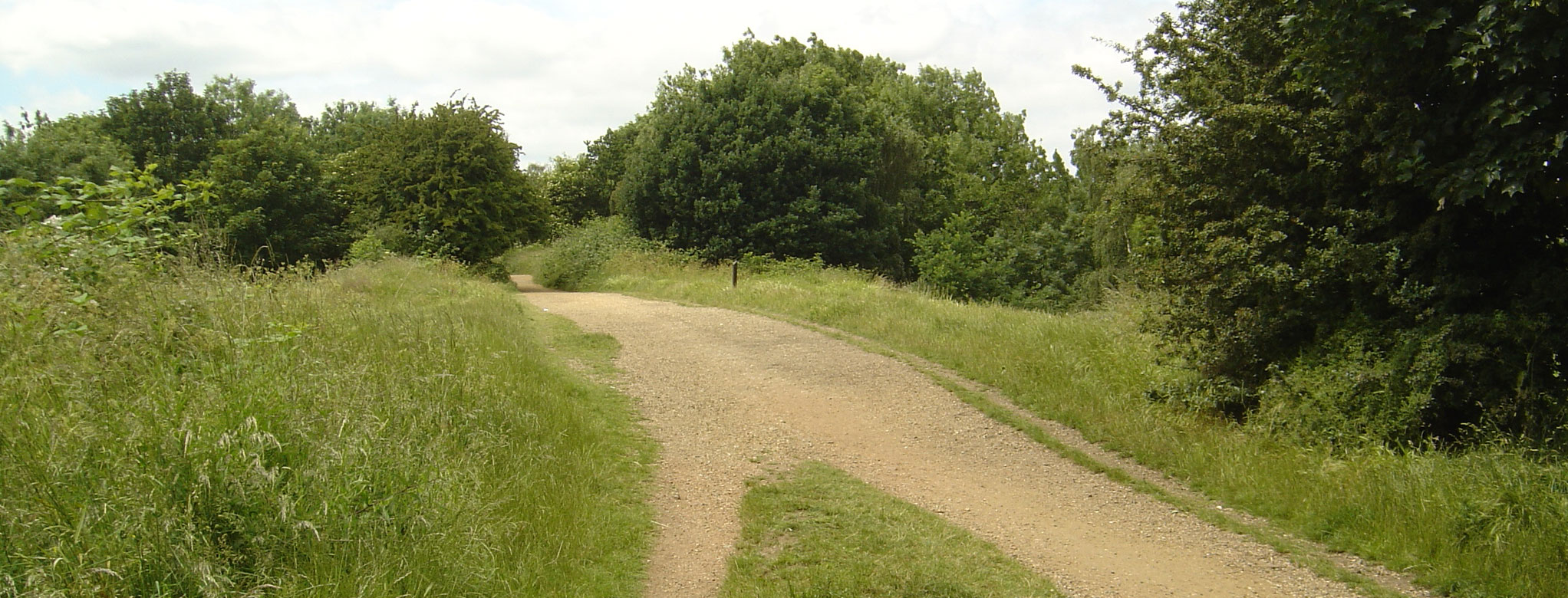
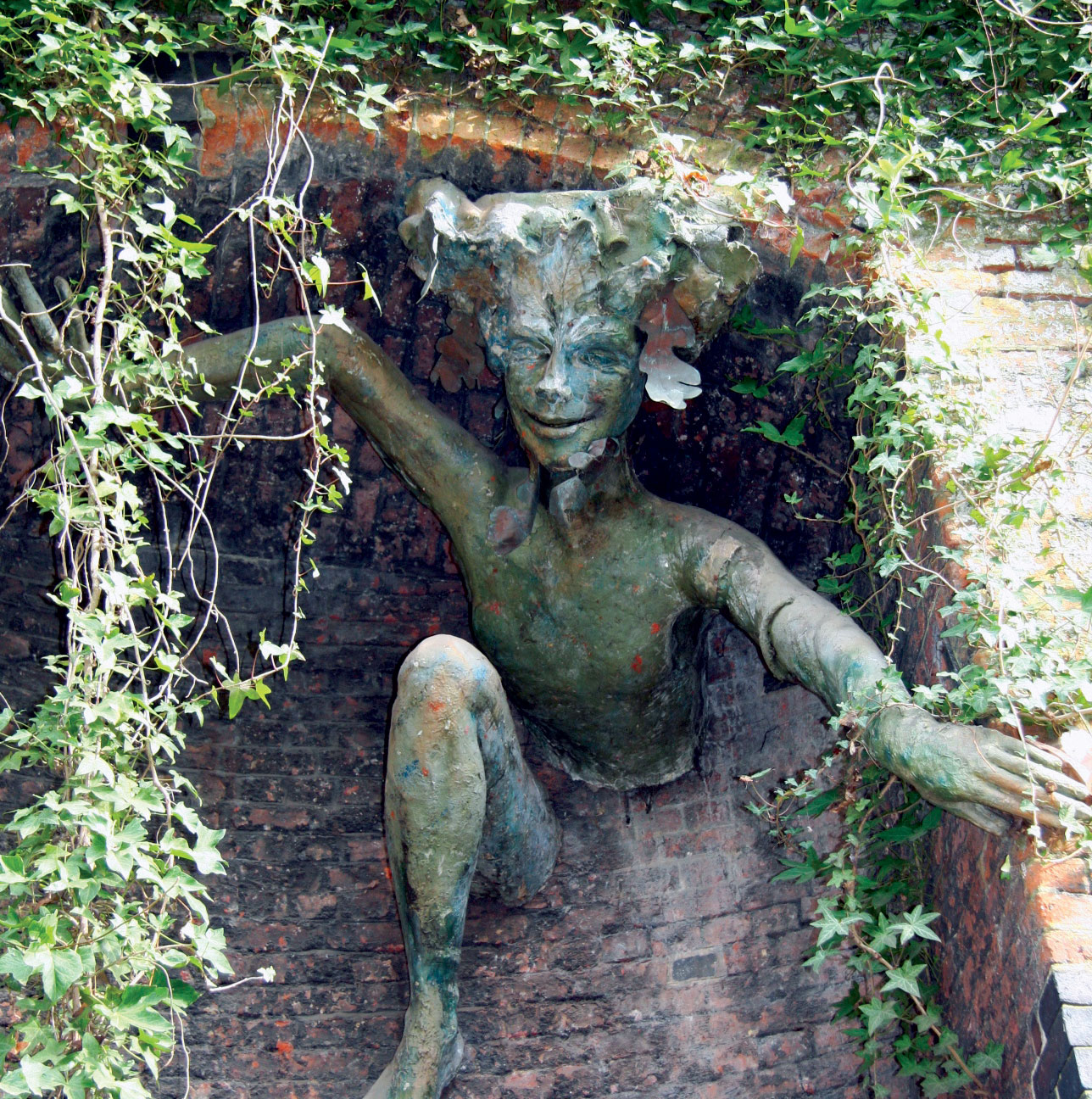
The Spriggan
It’s surprising how easy it is, when negotiating the pedestrians, cyclists, runners and dogs, to walk past the Spriggan and never realise this malevolent Cornish faerie is there. Perhaps it isn’t. Perhaps it’s only there when you look?
Folklore has it that it resides in castle ruins, barrows, certain standing stones and windswept crags and guards the faery realm, stealing human children replacing them with changelings.
When not in Cornwall you’ll find it in the upper sections of the brick abutments just along from the Crouch End Hill platforms and the footpath overhead.
The Spriggan was created in 1993 by artist Marilyn Collins. An Arts Officer working in Crouch End called Rob Grundsell had a dream to create a sculpture walk for the Parkland Walk. Only one piece was commissioned however, and it was Marilyn Collins’ designs for a creature from fairy lore that was chosen by the youngsters at a local youth club.
Marilyn collaborated with artist and friend Theresa Pateman who helped to develop and model the sculpture. It was erected by sculptor Joe Rodriguez.
The sculpture shares a place that has become established as a location for urban art and it’s pleasing to see that whereas other art is often painted over or vandalised, the Spriggan is respectfully left relatively unscathed.
It’s been suggested that the sculpture inspired Stephen King’s story ‘Crouch End’ but the truth is that the author wrote his tale in the early 1980s, long before the sculpture was created.

